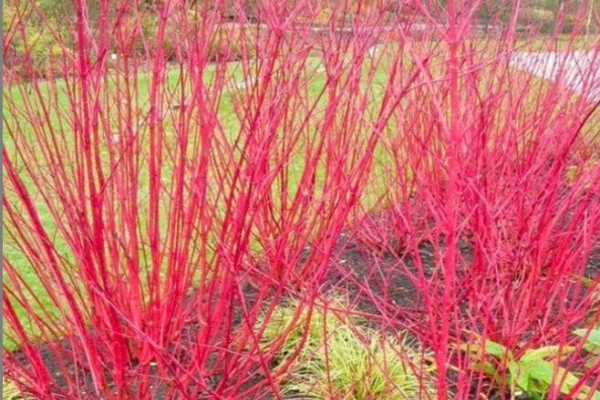
Fall in Love with Your Garden: Autumnal Planting Trends to Try This Month
31 October 2024
As the crisp autumn air settles in and the days grow shorter, now is the perfect time to embrace the beauty of your garden.
Autumn is a season of rich colours, from deep burgundies and browns to golden yellows and burnt oranges, and with the right plants and practices, you can create a stunning garden that thrives year-round.
Let’s explore some of the best autumnal gardening trends to try this month, with a focus on longevity and eco-conscious choices:
Plants
When it comes to garden design, sustainability should be a priority. Choosing plants that thrive in autumn and return year after year is a great way to create a low-maintenance, environmentally friendly planting scheme.
Here are a few plants to consider:
Ornamental Grasses (Panicum virgatum, Pennisetum alopecuroides, Miscanthus sinensis)
Ornamental grasses are an excellent choice for autumn gardens due to their graceful movement, rich colours and unique textures. Varieties like Panicum virgatum (switchgrass), Pennisetum alopecuroides (fountain grass) and Miscanthus sinensis (Japanese silver grass) provide shades of gold, burgundy and bronze that intensify as temperatures drop. Their tall, slender seed heads and feathered plumes create a stunning silhouette, especially when touched by frost, adding winter interest to the garden. These grasses are perennial and low-maintenance, returning reliably each year to bring structure and visual depth to the landscape. They’re also drought-tolerant and can thrive in various soil conditions, making them ideal for sustainable and easy-care gardening.

Echinacea purpurea (Purple Coneflower)
Echinacea, or purple coneflower, is a hardy perennial known for its daisy-like flowers and vibrant pink-purple petals surrounding a distinctive orange-brown cone. It blooms well into autumn, adding a pop of colour that attracts pollinators like bees and butterflies. Echinacea’s seed heads also offer winter interest, standing tall through colder months and providing a food source for birds. As a low-maintenance plant, Echinacea purpurea returns each year, often spreading naturally to fill garden beds with its cheerful blooms. Resistant to drought and adaptable to a variety of soil types, this plant brings beauty, resilience, and ecological value to the autumn garden.
Rudbeckia fulgida (Black-eyed Susan)
Rudbeckia fulgida, commonly known as black-eyed Susan, is a hardy, sun-loving perennial that delivers vibrant golden-yellow blooms with a contrasting dark centre. Flowering from late summer into autumn, it brings warmth and brightness to gardens even as temperatures cool. Like Echinacea, its seed heads remain attractive in winter, supporting local wildlife by providing food for birds. Rudbeckia is easy to care for and resilient, thriving in a range of soil types and conditions. Its ability to naturalise and spread makes it a reliable choice, offering long-lasting colour and structure to autumn landscapes with minimal maintenance.
Sedum
Another autumn staple, sedum is a hardy, drought-tolerant plant that’s perfect for filling gaps in your borders. Its star-shaped clusters of pink or red flowers are a magnet for bees, and its succulent foliage looks great even after the blooms fade.
Trees
Autumn is a magical time for trees, as they transform into vibrant displays of colour. Here are a few standout species to consider for your garden:
Liquidambar styraciflua (Sweetgum)
The sweetgum tree is known for its star-shaped leaves, which turn shades of red, orange, and yellow in autumn. This tree offers both visual appeal and unique texture to your landscape. Its seed pods add interest even after the leaves have fallen. Sweetgum trees are adaptable to different soil types and can tolerate wet conditions, supporting biodiversity by providing habitat and food for wildlife.
Amelanchier x grandiflora 'Ballerina (Snowy Mespilus or June Berry)
This tree is a small and deciduous with a long season of interest, it’s coppery spring foliage turns mid green followed by creamy white flowers. Leaves then turn orange or red in autumn accompanied by small purple-black fruits. Often grown as a multi stem plant, it’s also tolerant of wetter soils.

Prunus serrulata (Japanese Cherry)
Japanese cherry trees are known for their lovely spring blossoms, but they also offer attractive autumn colour. Their leaves change to shades of yellow, orange, and red, providing visual interest as the season progresses. Additionally, their elegant structure adds charm to any garden. Japanese cherries are generally low-maintenance and thrive in various soil conditions, attracting pollinators and supporting local ecosystems.
Betula utilis Jaquemontii (Himalayan Birch)
The Himalayan birch is recognised for its white bark and golden-yellow leaves in autumn. This tree adds a touch of elegance to the landscape, and its peeling bark provides winter interest. It's suitable for smaller gardens, as it generally maintains a more compact form. Himalayan birches adapt well to a range of soils and are often used in reforestation and restoration projects, improving soil quality and supporting biodiversity.

Shrub
Shrubs can provide structure, colour, and year-round interest in the garden. Here are some sustainable options that shine in autumn:
Hydrangea paniculata (Panicle Hydrangea)
Panicle hydrangeas are known for their large, cone-shaped flower clusters that change from white to shades of pink and purple in the fall. They thrive in various soil types and are relatively low maintenance. These shrubs support pollinators and provide winter interest with their dried flower heads.
Cornus alba (Siberian Dogwood)
Siberian dogwood is valued for its striking red stems and colourful foliage. In the autumn, its leaves turn a vibrant shade of red before falling, revealing the attractive stems. This hardy shrub is excellent for stabilising soil and providing habitat for wildlife.

Cotinus coggyria ‘Grace’ (Smoke Bush)
One of the standout shrubs for colour in the garden is Cotinus coggyria. It features dark green-red leaves and fluffy flower clusters in spring and summer. In the autumn, it typically showcases warm fire-gold hues. This October, while some branches have begun to turn, many leaves are dropping without changing colour, adding to the tree's distinctive appearance during this time of year. This shrub is resilient and drought-tolerant once established, making it a low-maintenance choice for gardeners.
Bulbs
Autumn is an excellent time to plant bulbs, as they establish roots before winter and bloom beautifully in the spring. Here are a few great options:
Narcissus (Daffodils)
Daffodils are a classic spring-blooming bulb known for their bright yellow and white flowers. They are deer-resistant and thrive in a variety of soil types. Planting daffodils supports pollinators as they provide nectar in early spring and can naturalise easily, returning year after year with minimal care.
Crocus
Crocus bulbs are small but mighty, bringing early colour to the garden with their vibrant purple, yellow, and white flowers. They are great for naturalising in lawns or under trees. Crocus bulbs require little maintenance and are excellent for attracting bees, making them a sustainable choice for supporting local ecosystems.
Allium
Alliums, or ornamental onions, produce large, spherical flower heads in shades of purple, white, and pink. They thrive in well-drained soil and are drought-tolerant once established. Alliums not only add visual interest but also attract beneficial insects like bees and butterflies.
As autumn arrives, it’s the perfect opportunity to transform our outdoor space and embrace the season's beauty. By choosing plants, trees, shrubs and bulbs that do well this season and the next, you can create a beautiful garden that lasts.
Happy gardening!
At Haywood Landscapes, we have been advising clients and building beautiful gardens across Kent and the surrounding areas for over 30 years
If you’re ready to see what our creative garden designers can do with your garden, get in touch with us or call 01227 733447 today.





